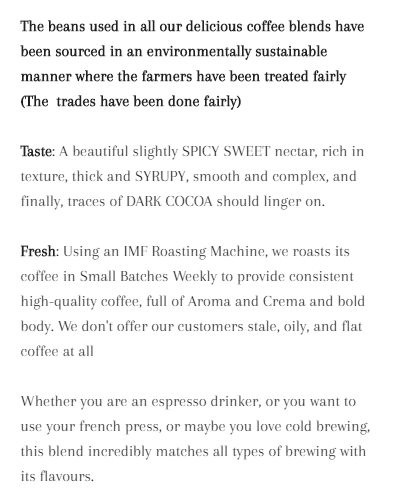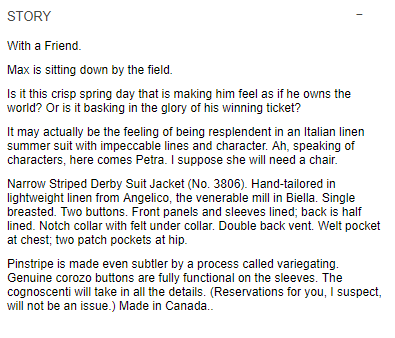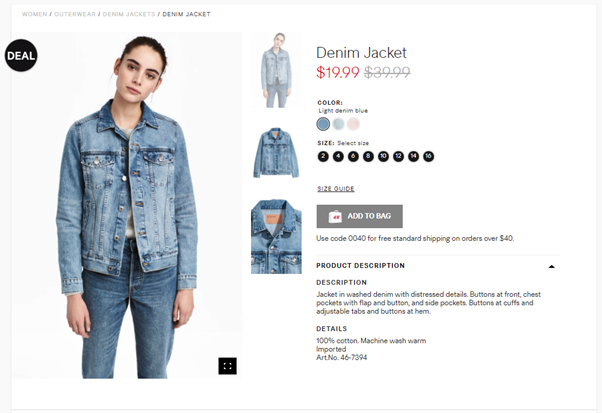
Image: Burst
Guest post by Victoria Greene of Victoria Ecommerce.
Is your ecommerce store floundering? Are your eBay sales falling? It could be down to your product listings. When you’re creating an online brand, you’ll want to not just sell your goods, but seduce your customers into buying. Your ecommerce product listings should be attractive and engaging, enticing people into a product. It’s not enough just to list its features and leave it at that. You want your customers to invest in your product, to feel a need for it. And the best way to do that? Ecommerce psychology. If you want to learn how to get into your customers’ heads and make your product listing really resonate, read on...
1. Appeal to Customer Emotions
I’m sure it’ll come as no surprise to you that your customers are living, breathing people with hopes and fears and dreams. Humans are emotional creatures, and that’s the best way to engage with them—through their feelings. Indeed, studies on the psychology of sales have shown that consumers rely on their emotions over rational information when making purchases.
You need to identify or even create your customer’s need—then fulfill it. A very extreme example of this can be seen in the Listerine adverts of the 1920s:

Listerine creates the fear of social ostracization through the possibility of having bad breath. They then position their product as a solution and a preventative to that.
So, when you’re writing your product listings, be sure to appeal to their feelings. Maybe they’re concerned about keeping their look fresh and on-trend this summer? Your luxury swimwear is stylish and current, fulfilling the need they didn’t know they had. Or perhaps they want to buy a gift that’s different from what they buy every year. Your product is that gift!
2. Authority
Regardless of what those rebels without a cause say, people respond well to authority. If you’re at an event and someone in a fluorescent jacket tells you to move, chances are you’re going to move quickly, without giving it a second thought. So how can we apply this to ecommerce psychology? Expert testimonial.
Try sending your product to a renowned expert in your ecommerce field, then getting their feedback on it. For example, if you sell sportswear, send a free sample to a personal trainer with a big online presence. Use their review in your product listing, with their photo and a brief bio.
No expert on hand? No problem. If you or one of your team have enough experience, you could be that expert. Even something as simple as singling out your staff favorites is enough to lend your product weight with significant authority. After all, who knows your product better than you?
3. Social Proof
The answer? Your customers.
The principle of social proof is similar to authority, only instead of doing what the experts tell us, we do what other people do. Just as one person wears a new jacket, then a couple of weeks later everyone is wearing the same jacket, the phenomenon works in ecommerce psychology as well. So, if people are singing your praises, let everyone know!
You can incorporate this into your product listing by ensuring any positive customer reviews are readily available and visible. With some ecommerce sites like Amazon, they are already displayed as part of the product listing. However, you can also collate these yourself and add them in to your chosen ecommerce platform. This can be done easily and quickly, for example by offering customers a discount voucher when they leave a review after making a purchase.
4. Sensory Language
An effective tactic based on the psychology of selling is the use of sensory marketing. This method is designed to appeal to one or more of a customer’s senses, encompassing smell, taste, sound, sight and touch. Consider the following: Crunchy. Gooey. Crispy. Words like these are guaranteed to make anyone’s mouth water! Appealing to a person’s senses builds up an emotional association with the product. This means they are far more likely to make a purchase informed by their senses than any rationale. Look at the example below from Natural Conscience, a tea and coffee ecommerce store listed on Shopify’s Exchange marketplace:

Image: Exchange
That “Taste” section really pops, doesn’t it? You can almost taste the coffee.
So think about your product. Is it edible? Or something you wear? How will your customer interact with it? One or more of their senses will be impacted by it, so tap into them with the words you use.
Your specially-selected wines aren’t just good, they’re smooth and bold, bursting with rich flavor. Your chiffon summer cover-ups aren’t just soft, they’re as light as a feather and velvety-soft to the touch. Using sensory language will spice up a product description and reel in customers in droves.
5. Tell Your Story
The psychology of customers dictates that a person is more likely to make a purchase if they feel an affinity for the brand in question. Essentially, if they like you, they’ll buy from you. Big brands do this by hiring celebrities to endorse their product, and to great effect. But you want to write an ecommerce product listing that creates an affinity without breaking the bank. How? By telling a story.
Everyone has their own story to tell, and your product is no different. Stop seeing it as just something to sell and look at it as a must-have improvement to the buyer’s life. Charge your product listings with a scintillating story to make a rational shopper into an emotional customer invested in your brand. A great example of this can be seen on The J. Peterman Company’s clothing store, in this advert for a striped Derby suit jacket:

Image: The J. Peterman Company
This evocative and intriguing product story paints a picture for the reader. It gives the jacket a real, emotional dimension, and one that undeniably draws in the consumer.
6. Scarcity
If you go into a shop and see a top that you really love, but you’re unsure about handing over the cash for it, you might leave it and mull it over. However, if there are only three left, you’re not going to want to miss out. That’s the principle of scarcity in action. This is a commonly used tactic in ecommerce psychology, and one that works to great effect. In fact, a 1975 study found that the less there is of an item, the more valuable it is perceived to be.
Include a limit or deadline in your product listing, and you will see your sales soar. And to really boost your figures, include a ticker counting down to the final date of a sale. The urgency will compel even the most reticent of customers!
7. Anchoring
In the psychology of sales, anchoring is the idea that we generally make our decisions based on the first piece of information we see. This means that we view any new information in relation to the first piece. For example, let’s say there’s a protein powder that normally retails at $55, but it’s been discounted to $40. At this point, the consumer doesn’t consider whether it’s a good deal in and of itself. Instead, they think it’s a good deal in relation to the original, much higher price. Lots of online retailers employ this method to great effect, like H&M have for this denim jacket:

Image: H&M
Bonus Tip!
Think about the last three things you bought. No matter how much they cost in dollars, they’ll probably all have ended in .99. This is called psychological pricing, and is probably the most commonly used method in the psychology of sales. In its broadest sense, it is the theory that certain prices have a more significant impact on customers than others. Familiarize yourself with the different types and experiment with your own prices.
So what can you take away from this? It all comes down to thinking about your customer and what makes them tick. Once you’ve identified that, go for the jugular. Appeal to their emotional needs—and their senses too. Boost your product value by highlighting when it’s scarce. And when there’s a discount, make sure your customers know how (relatively) good the deal is for them. Ecommerce psychology offers a world of opportunity for you, so don’t be afraid to run with it!
 Victoria Greene is a branding consultant and freelance writer. For all the latest developments in ecommerce, marketing, and design, check out her blog, Victoria Ecommerce. Victoria has a passion for getting the best return on online businesses for ecommerce store owners.
Victoria Greene is a branding consultant and freelance writer. For all the latest developments in ecommerce, marketing, and design, check out her blog, Victoria Ecommerce. Victoria has a passion for getting the best return on online businesses for ecommerce store owners.




